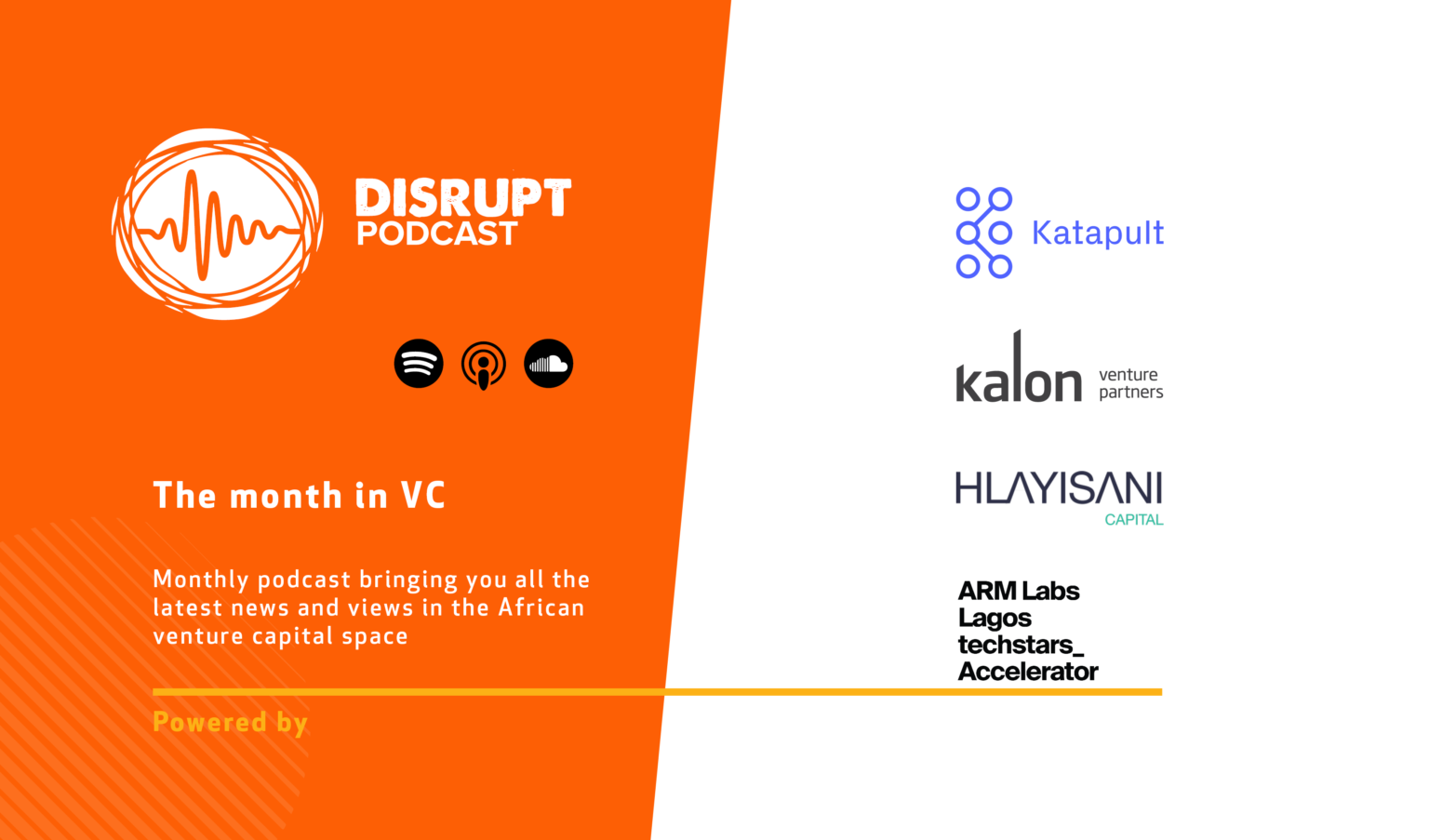Attracting local investors is crucial to the sustainability of a country’s local venture capital ecosystem, but encouraging institutions to overcome entrenched attitudes towards risk can be a challenge.
For the latest episode of Disrupt Podcast’s “The month in VC” series, produced in partnership with Katapult Africa, Kalon Venture Partners, Hlayisani Capital, and ARM Labs Lagos Techstars Accelerator we discussed the importance of local capital, especially institutional capital, when it comes to building a successful tech startup ecosystem with Mathew Palin, partner at South African VC firm Hlayisani Capital.
First thing’s first. There is, in general, simply not enough capital for standalone VC firms in Africa.
“The venture capital funds that aren’t linked to an existing large corporate, these standalone venture capital funds, are terribly underfunded. The average size of a fund in South Africa is probably around ZAR50 million (US$2.7 million), and there’s only four or so that are greater than ZAR100 million (US$5.4 million),” he said.
“If we look at just what it costs to run a venture capital fund, you need at least ZAR500 million (US$27 million), ideally ZAR750 million (US$40 million) in funds under management to make it a sustainable business as a venture capital fund. So we are underfunded if we compare it to the US. In around 2010 the average VC fund in the US was US$300 million, so when you compare that to where we are now we are just desperately underfunded.”
In South Africa, the majority of investment capital has been local, but there has been a hard learning curve, with institutions having become anti-VC very early on. Family offices have proven more understanding.
“In 2010 a lot of private equity-type investment institutions tried VC, and they took a late-stage private equity mindset to it and they didn’t get it right. They were expecting to see strong cash flows and were valuing businesses off that. They wanted to see profits, because that’s how you do a private equity deal, and applying that to a venture capital opportunity doesn’t really work,” said Palin.
“So there was kind of a collapse of VC back in 2010, and a lot of people said VC didn’t work in South Africa, and what that meant is that institutions who had got burnt in that process became really really anti-VC for a long time. In fact, when we started our growth fund, which was our first fund under Hlayisani Capital umbrella, we didn’t call it a venture capital fund because we knew it had the stigma.”
The VC space, then, has had to rely on angels, ex-entrepreneurs, and other private capital – essentially family office type investors.
“What we do resonates with them. Typically family offices are family offices because they’ve built a family business and made money from it and so they’ve been on that entrepreneurial journey. And and so when we show them the types of businesses that we want to invest in they can see that, and they want to support it,” said Palin.
Institutions are increasingly, slowly but surely, coming to the table. In South Africa, Standard Bank has been a leader, and the SA SME Fund is doing great work. Palin wants more from government, however.
“We haven’t been supported financially by government at all in the ecosystem. If we look at some other emerging countries, and how they really kickstarted their venture capital ecosystem, it was through government support, whether kind of first loss funds or putting into VC funds. We haven’t had that, and that’s something that I would really love from our government,” he said.
Being “local” is a key advantage when it comes to VC.
“It is difficult to not be in a country and truly vet a company, and understand the risks associated with that company if you’re not really in touch with the risks associated associated with its home market or where it’s established,” Palin said.
“Being South African, we understand this market and we understand the environment that it operates in and the opportunities and the risks associated with that. Having been in this game and worked with a lot of companies to help them grow both locally and internationally, we have built up our experience and our track record of being able to help these businesses. So having a close touch point can definitely help. Local homegrown knowledge can definitely help.”
How do we get more local LPs, especially institutional ones, interested in African VC?
“I think it starts with education. I think there is a lack of understanding about what the true risks of venture capital are, and the tools and processes that we as venture capital investors put in place to reduce those risks. So we do that wherever we have the opportunity. We’ll happily explain and talk through what a VC can do to reduce the risk for an LP investor,” said Palin.
“We just need that one person and that champion in that institution to stick their neck out and say “let’s give it a go”. But I think that’s more and more likely to happen. Traditional markets and big institutions are going to struggle to find returns, and so they’re going to have to look at alternatives like venture capital to get those returns. So I think we’re in a good space. Obviously there’s a lot going on in the world that is causing challenges. But I think in the long run it’s going to be good for the VC ecosystem.”


